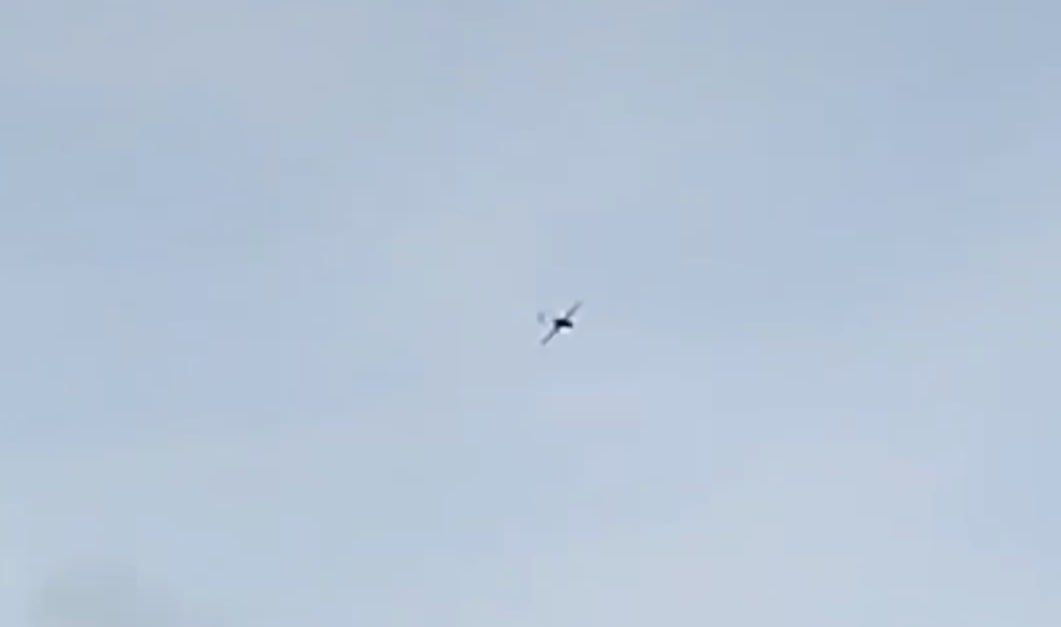During the night of Tuesday, the Ukrainian Armed Forces made another attempt to attack targets on Russian territory using fixed-wing unmanned aerial vehicles.
Throughout the night of July 22, air defense systems intercepted and destroyed 35 Ukrainian drones. Nine UAVs were shot down over the Bryansk region, and another seven were downed over the Rostov region. Six drones were neutralized over the Kaluga region.
Three drones each were destroyed over the Samara, Moscow, and Tula regions. Two UAVs were shot down over the Belgorod region. One more drone was suppressed over the Kursk region and another over the Black Sea.
Reports indicated drone threats in the Krasnodar region. Residents received emergency alerts around 21:45 about possible drone attacks.
Black Sea
The Black Sea, located between Southeastern Europe and Western Asia, has been a vital trade and cultural crossroads for millennia, linking Europe, the Caucasus, and the Middle East. Historically, it was home to ancient Greek colonies, Byzantine ports, and Ottoman trade routes, while its unique anoxic deep waters preserve ancient shipwrecks. Today, it remains a key region for commerce, tourism, and geopolitical significance, bordered by six countries.
Bryansk region
The Bryansk region, located in western Russia near the borders of Belarus and Ukraine, is known for its dense forests, historical significance, and role in World War II. It was a major center of partisan resistance against Nazi forces during the war and is home to cultural landmarks like the ancient Svensky Monastery, founded in the 13th century. Today, the region preserves its wartime heritage while also being an important industrial and agricultural area.
Rostov region
The Rostov region, located in southwestern Russia, is a historically rich area known for its cultural heritage and strategic importance. Established in 1937, it is home to Rostov-on-Don, a major economic and cultural hub founded in 1749, which played a key role in trade and military history. The region is also famed for its Cossack traditions, scenic Don River landscapes, and archaeological sites dating back to ancient times.
Kaluga region
The Kaluga region, located in central Russia, is known for its rich history, cultural heritage, and contributions to science and space exploration. It was founded in the 14th century and played a role in medieval Russian defense, later becoming a center for industry and education. The region is also famous as the home of Konstantin Tsiolkovsky, the pioneer of astronautics, and hosts the Tsiolkovsky State Museum of the History of Cosmonautics in its capital, Kaluga.
Samara region
The Samara region, located in southwestern Russia along the Volga River, is known for its rich history, natural beauty, and industrial significance. Founded in the 16th century as a fortress to protect Russian borders, it later became a major trade and manufacturing hub. Today, the region is famous for the Zhiguli Mountains, Samara Space Museum (highlighting its role in Soviet space programs), and the scenic Volga River landscapes.
Moscow region
The Moscow region, or Moscow Oblast, is a federal subject of Russia surrounding the capital city of Moscow. Rich in history, it was established in 1929 and has played a significant role in Russia’s cultural and political development, featuring historic towns, monasteries, and estates dating back to medieval times. Today, it is a key economic and industrial hub while preserving landmarks like the Trinity Lavra of St. Sergius in Sergiyev Posad, a UNESCO World Heritage Site.
Tula region
The Tula region, located in western Russia, is known for its rich history, cultural heritage, and industrial significance. It is famous as the home of Yasnaya Polyana, the estate of writer Leo Tolstoy, and for its historical role in arms production, particularly at the Tula Arms Plant, founded in 1712. The region also features medieval landmarks like the Tula Kremlin, reflecting its importance as a defensive stronghold in the 16th century.
Belgorod region
The Belgorod region, located in southwestern Russia near the border with Ukraine, is known for its rich agricultural lands, historical significance, and military heritage. Founded in 1954, it played a key role in Russia’s southern defenses and was a major battleground during World War II, particularly in the Battle of Kursk. Today, it is recognized for its cultural landmarks, such as the Prokhorovka Tank Battle Museum, and its vibrant Orthodox Christian traditions.






